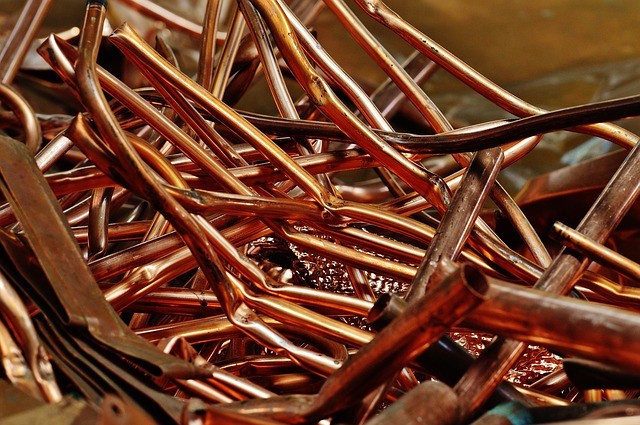Most metals have practical uses, but there are a few that stand out in terms of application. Copper, for example, is used for making a wide range of valuable materials, including electrical wires, semiconductors, electromagnets, and many more. This, however, is just a tiny fact about copper that you most likely already know. Following are some of the facts about copper that you probably didn’t know.

Copper Is One of the Oldest Metals Discovered
The term “copper” was derived from the Latin word cuprum, which means “from the island of Cyprus”. Even so, this metal did not originate from Cyprus. There’s no record stating exactly where copper was first discovered and mined, but the oldest copper-based artifact was unearthed at Tel Tsaf, an archeological site in Israel. The artifact is a cone-shaped awl measuring about four centimeters long and one millimeter thick.
This discovery proves that copper is among the first metals discovered and utilized by man. It also provides evidence that metal exchange had taken place in the Middle East, and perhaps throughout Africa and Asia, 6,000 years ago. In fact, even older artifacts made of metal, especially copper, may still be lying underneath the desert sands and waiting to be disinterred.
Passivation: Copper Is Destined to Last a Lifetime
If you’re wondering how the copper awl lasted for millennia in Tel Tsaf, then read on. Copper is one of the few metals that tend to be passive. This means it does not weather like everything else. When you expose iron to moisture, you’ll eventually see rust forming on its surface in a few days. If neglected for so long, the rust can reduce the metal to useless debris.
Copper responds very differently. Instead of forming rust upon making contact with moisture, it forms a protective greenish layer, called patina. This layer shields the surface and the inner parts of the metal from further exposure to the elements. The longer copper is exposed to oxygen, the thicker the patina on its surface grows. It is this protective layer that has kept the Tel Tsaf’s copper awl intact for thousands of years.
There are other metals and alloys that exhibit passive properties, such as aluminum and silicon, so you may wonder why archeologists are only able to dig up copper artifacts. Well, aluminum and silicon hadn’t been discovered since decades ago so you can’t expect an object made of them coming out of an ancient graveyard. If there is, then our historians couldn’t be more wrong.
Where Today’s Copper Is Coming From
The copper that man used in the ancient times and today’s copper come from the same place—underneath the ground. There are about 18 countries that produce copper worldwide. The biggest among them is Chile, which produces nearly 20 percent of all the copper introduced into the global market each year.
Sadly, the recent data released by the International Copper Study Group revealed that there has been a significant decline in copper production in Chile and other major copper producing countries in the last five years. Mining experts suggest exploring new grounds to augment the growing gap in production due to shortage. The demand for copper, however, is not expected to decrease anytime soon. With supply plummeting when demands keep going up, the consumers can expect a spike in copper prices.
To ensure the quality of the copper products that you will use for your future projects despite the expected price increase, however, make sure to purchase them from a well-known and established metal supplier like Rotax Metals. So the next time you ask someone where to buy copper sheets, bars, or tubes and you didn’t get the same supplier name, walk away.
Sources:
The World’s 20 Largest Copper Mines, thebalance.com
Facts About Copper, livescience.com
Decline in Chile Copper production hits Global Copper mine output, metal.com
Scientists unearth 7,000-year-old copper awl, oldest metal object in Middle East, techtimes.com

